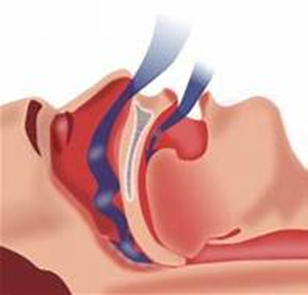A nurse is assisting in the care of a patient who is receiving pain medication by the epidural route.
It is most important to monitor this patient for which adverse drug effects?
Constipation.
Hypoventilation.
Nausea.
Headache.
The Correct Answer is B
Choice A rationale:
Constipation is not a common adverse effect of pain medication administered by the epidural route. Pain medication primarily affects the central nervous system and does not typically impact the gastrointestinal system in a way that would lead to constipation.
Choice B rationale:
Hypoventilation is the correct answer. When opioids or other potent pain medications are administered by the epidural route, they can depress the respiratory center in the brain, leading to hypoventilation (slow or inadequate breathing). This is a critical concern and the most important adverse effect to monitor because it can lead to respiratory compromise or even respiratory arrest.
Choice C rationale:
Nausea can be a side effect of some pain medications, but it is not the most important adverse effect to monitor in a patient receiving epidural pain medication. Nausea can often be managed with antiemetic medications.
Choice D rationale:
Headache is not a common adverse effect of epidural pain medication. The administration of pain medication into the epidural space is localized to the spinal area and does not typically lead to headaches.
Nursing Test Bank
Naxlex Comprehensive Predictor Exams
Related Questions
Correct Answer is C
Explanation
The correct answer is: C. Decreased energy.
Choice A reason: Hypotension is not typically associated with obstructive sleep apnea (OSA). OSA is more commonly linked with hypertension due to the frequent arousals during sleep that activate the sympathetic nervous system, leading to increased blood pressure.
Choice B reason: Pneumonia is an infection of the lungs and is not a direct consequence of OSA. While OSA can affect the respiratory system, it does not cause pneumonia. However, individuals with OSA may have a higher risk of respiratory infections due to compromised breathing during sleep.
Choice C reason: Decreased energy is a common symptom of OSA. People with OSA experience repeated episodes of partial or complete upper airway obstruction during sleep, leading to disrupted sleep patterns and insufficient rest. This results in daytime sleepiness and fatigue, which are hallmark signs of the condition.
Choice D reason: Thyroid disease, specifically hypothyroidism, can be associated with OSA, but it is not a direct finding of the condition. Hypothyroidism can lead to changes in the soft tissues of the upper airway and contribute to the development of OSA, but it is not a symptom used to diagnose OSA.

Correct Answer is D
Explanation
Choice A rationale:
Magnesium is not typically considered a natural supplement that enhances sleep. While magnesium is an essential mineral for overall health, it is not commonly used as a sleep aid.
Choice B rationale:
Calcium is also not commonly used as a natural supplement to enhance sleep. While calcium is important for bone health and various physiological processes, it is not primarily associated with improving sleep.
Choice C rationale:
Oil of lavender is known for its calming and soothing properties, and it can have a relaxing effect. However, it is not as commonly used or as effective as melatonin for improving sleep. Lavender oil is more often used for its aromatherapy benefits.
Whether you are a student looking to ace your exams or a practicing nurse seeking to enhance your expertise , our nursing education contents will empower you with the confidence and competence to make a difference in the lives of patients and become a respected leader in the healthcare field.
Visit Naxlex, invest in your future and unlock endless possibilities with our unparalleled nursing education contents today
Report Wrong Answer on the Current Question
Do you disagree with the answer? If yes, what is your expected answer? Explain.
Kindly be descriptive with the issue you are facing.
